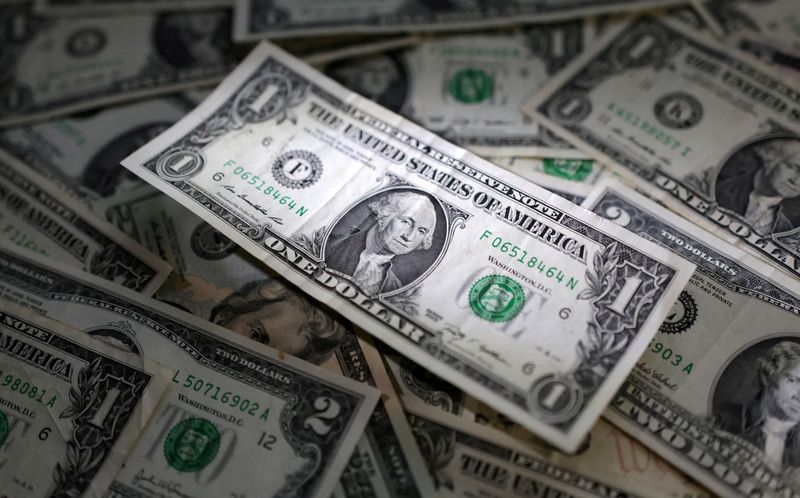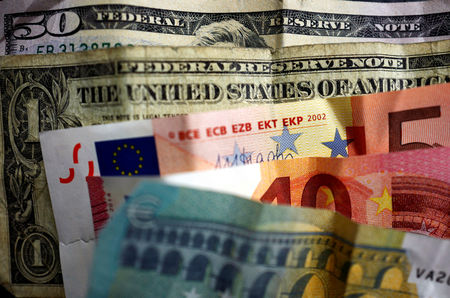
By Kevin Buckland
TOKYO (Reuters) -The Australian dollar tumbled to a four-month low on Wednesday after weaker-than-expected economic growth raised expectations for earlier interest rate cuts, while South Korea’s won stabilised after a decision to impose martial law was reversed.
The Chinese yuan tried to pull away from its weakest in more than a year as the People’s Bank of China set a stronger official trading band for the currency.
The U.S. dollar recovered from a three-week low versus the yen and ticked up against other major rivals as traders waited on more labour market data for clues on the path for Federal Reserve policy.
The euro held its ground above its recent two-year trough, even as French lawmakers prepared to vote on no-confidence motions later in the day that are all but certain to topple the government.
The Aussie sank as much as 1.22% to the lowest since Aug. 4 at $0.6408 before trading at $0.6434 as of 0449 GMT. The New Zealand dollar tracked those declines, losing 0.5% to $0.5850.
Australia’s economy grew at the slowest annual pace since the pandemic in the third quarter.
Markets moved to almost fully price in a rate cut next April at 96% from 73% before, and see a 35 basis points easing for May, from 28 bps before.
“The main takeaway from the September update is that an expected tentative recovery in private demand has not formed,” said Pat Bustamente, senior economist at Westpac.
“The weakness of annual growth in spending and continued pressures on household disposable income – even with tax cuts flowing – points to a weaker underlying picture.”
The won was little changed at 1,413.80 per dollar after starting trading with a 0.5% jump that reversed almost all of the previous day’s losses, when it dropped as low as 1,443.40 per dollar for the first time since October 2022 following President Yoon Suk Yeol’s shock martial law declaration.
Dealers said the country’s central bank may have supported the won at Wednesday’s open by selling dollars.
The crisis deepened with opposition lawmakers vowing to impeach the president, and Chosun Ilbo newspaper reported the cabinet intends to resign en masse.
“Near term, you’ve got to think that it’s going to be difficult for the won to do particularly well: Terrible structural backdrop, the domestic economy looks weak, you’ve got the central bank likely coming in and doing more (easing) than was previously expected, and on top of that, political malaise,” said Rob Carnell, ING’s regional head of research for Asia-Pacific.
“The fact that just generally the dollar looks stronger than everything else by default (makes it) almost a perfect storm.”
The U.S. dollar index, which measures the currency against six top counterparts including the yen and the euro, added 0.09% to 106.42.
The dollar added 0.29% to 150.035 yen, continuing its recovery after dipping to 148.65 yen in the previous session for the first time since Oct. 11.
The dollar got some support on Tuesday after data showed U.S. job openings increased moderately in October while layoffs declined, even as Federal Reserve officials on the day did not provide definitive guidance on what they intend to do at the conclusion of their next policy meeting in two weeks’ time.
Traders are waiting for crucial monthly payrolls data on Friday for more steer on the rates outlook, while a private payrolls report due later on Wednesday will offer something of a preview.
Market-implied odds of a quarter-point rate reduction on Dec. 18 last stood at 75%, according to CME’s FedWatch Tool.
The euro was little changed at $1.05035, where it has been making a home this week as the political crisis in France comes to a head. On Nov. 22, it had tumbled as low as $1.03315.
Sterling edged slightly lower to $1.2663.

The offshore yuan edged up to 7.2928 per dollar, putting a bit of distance from the previous day’s low of 7.3145, the weakest since November of last year, helped by a stronger-than-expected central bank midpoint fixing.
Markets took that as a sign of rising unease in Beijing over the currency’s recent rapid declines amid renewed tariff threats from incoming U.S. President Donald Trump.
This post is originally published on INVESTING.


